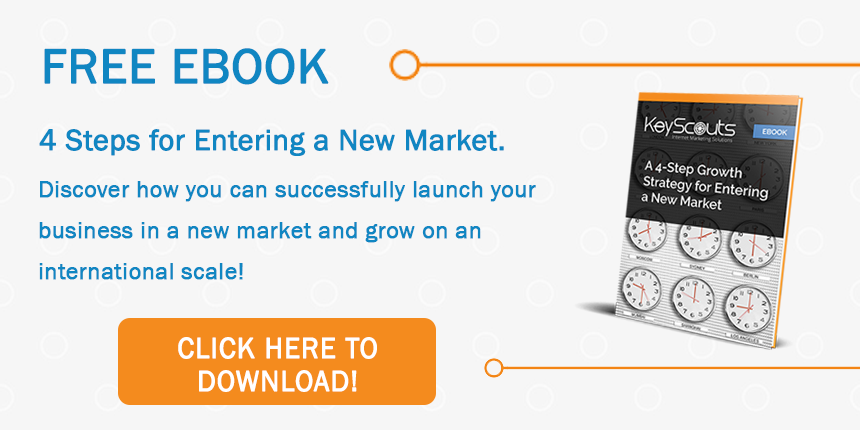
With the B2B landscape becoming increasingly competitive, you’ll need a solid plan if you’re thinking of expanding into an international market. How are you going to succeed in penetrating a new region?
Well, if you’re a B2B marketer treading the waters of expanding your company’s business overseas—look no further. These tips will help you develop a good inbound marketing strategy for international markets. You’ll be grateful you found these tips!
|
Go Global, Build Your International Inbound Strategy Expand your reach and attract international customers with a tailored inbound marketing strategy. |
What is Inbound Marketing?
Inbound marketing is a strategic approach that focuses on creating valuable content and experiences tailored to your audience's needs. Unlike outbound marketing, which interrupts potential customers with unsolicited messages, inbound marketing attracts customers by providing solutions to their problems and answers to their questions. This approach builds long-term relationships and trust with your audience.
A successful inbound marketing strategy involves various tactics such as content creation, social media marketing, email campaigns, and search engine optimization (SEO). By offering quality content like eBooks, case studies, webinars, and informative blog posts, you can engage your audience and guide them through the customer journey. The goal is to meet your audience where they are and provide them with the information they need at each stage of their decision-making process.
The Importance of an International Inbound Marketing Strategy
It is crucial to have a solid international inbound marketing strategy as you take on the task of opening your business up to a new market.
What is B2B international inbound marketing?
As you probably already know, inbound marketing is a proven strategy for attracting customers through quality content. Slap international onto that term and your inbound marketing efforts (including content marketing, blogs, search engine optimization (SEO), PPC, and social media) become targeted toward a specific overseas market.
An inbound marketing strategy is set on the use of digital media, as it can be consumed by potential customers anywhere in the world. But the main draw of inbound marketing is that it meets the needs of today’s buyers by providing them with free, valuable content that helps them research and solve their problems and drives them towards your business. Because inbound marketing relies on the internet, using this powerful strategy to expand internationally is doable and worthwhile.
Here are 5 tips you can use to do B2B international inbound marketing right.
Tip #1: Plan And Set Goals
Okay, so before you jump into any new B2B venture, especially one that's going global, it's super important to have a clear plan with some solid goals. When you're figuring out what you want to achieve with international inbound marketing, make sure it fits in with what you're already doing with your business and marketing. You'll probably want to have a quick chat with your sales and management teams about this.
Once you have a general direction, it's time to map out a well-structured inbound marketing campaign. This is key for actually hitting those international marketing goals. You'll also need to take a look at where your business stands right now – what's your budget, and what resources do you have available for this project?
After that, it's time to set SMART goals. And we're not just saying "realistic" – we mean SMART as in Specific, Measurable, Attainable, Relevant, and Time-bound.
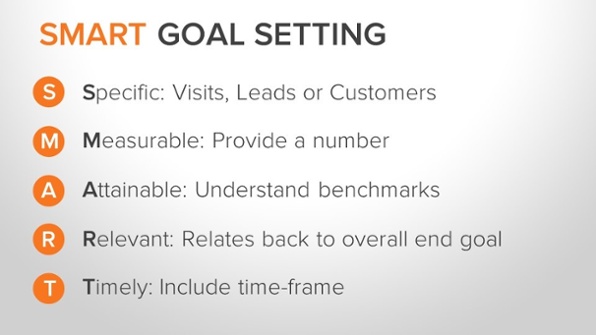
Source: HubSpot
Write down your SMART goals and keep them handy so you and your team can refer to them regularly and make sure you’re staying on track.
Tip #2: Do Market Research
Like with any B2B marketing strategy, international inbound marketing relies on a clear understanding of the market and the audience you’re trying to reach. Do the research required to understand who your new buyers are? Your research should focus primarily on the culture of your new target market.
Understanding the differences between inbound and outbound marketing is crucial for effective market research and strategy development. Inbound marketing invites customer engagement through valuable content, while outbound marketing uses interruption tactics to reach potential customers through traditional media channels.
Before you create any content for your new geography, you need to research how cultural differences might impact your efforts. Consider the theory created by Prof. Geert Hofstede, which you can apply when creating new cross-cultural marketing materials. His theory highlights six cultural dimensions that show how buyer behavior is affected by different cultures and values.
The six dimensions are:
1. Power distance
This revolves around how a certain culture handles inequality between people who have less power and those who have high power. Power distance relates to marketing in that it impacts how buyers perceive a B2B brand’s status, and what they expect from your communication and customer service. For example, a buyer from a high power distance culture like France might expect to see the titles (Dr., PhD, etc.) of people who play important roles in your company.
2. Individualism vs. Collectivism
This dimension is all about whether people in the society define themselves as individuals (“I”) or as a collective (“we”). An individualistic culture’s people are expected to take care of themselves and their families, whereas collective cultures value a tighter-knit society that goes beyond the immediate family. Knowing whether your target audience is more self-reliant or group-oriented will help you shape appropriate content for them.
3. Masculinity vs. Femininity
Does your target culture have a preference for assertiveness and achievement, or cooperation and modesty? Sometimes viewed as “tough versus tender,” the Masculinity vs. Femininity dimension can impact the design of your new international website as well as the focus of your marketing communications. For example, you might include gamification in a website designed for a masculine culture like Italy’s, or highlight how your services improve quality of life for feminine cultures like Finland’s.
4. Uncertainty Avoidance
To what degree do people of a certain culture seek to avoid uncertainty? That’s what this dimension is all about. Cultures with a high uncertainty avoidance don’t tolerate unusual ideas well, while cultures with a low uncertainty avoidance are more open to unorthodox ideas. What this dimension tells B2B marketers is how likely buyers in a certain culture are to be early adopters of a new product or service.
5. Long Term vs. Short Term Orientation
Long and short term orientation has to do with how much a certain culture values time-honored traditions versus a more pragmatic approach. This impacts marketers by giving insight into how much a new target market might value free, evergreen content like ‘How To’ videos (which buyers from long term oriented cultures would appreciate) or whether offerings like ‘immediate access’ would be more effective.
6. Indulgence vs Restraint
You can probably guess what this dimension is all about! Indulgence societies greatly value enjoyment and fun, whereas restrained societies tend to suppress and regulate needs. If you’re designing a new international website for an indulgent culture like Mexico’s, you might incorporate free trials, quizzes, and games into your digital marketing strategy. Meanwhile, marketing for restraint cultures might involve more emphasis on how your offering serves the community and can save buyers money.
Researching and implementing these six dimensions into your international inbound marketing strategy might seem overwhelming, but exploring the dimensions one by one can be more manageable. You can also check out the Culture Compass app, a useful tool that offers cultural insights about values, behavior and more.

When you’re doing your market research, you’ll probably also bump into the question of
whether your international marketing efforts should involve creating content in a new language based on your B2B target market. While the answer might automatically seem like a ‘yes,’ consider that effective translation will likely come at a heavy cost, and English-language content might be very useful once it has been tailored to local interests.
Whether you stick to English or create a website and marketing materials in the new target language, you’ll want to make sure that you localize all of your content. Localization will go beyond your choice of language and also impact your site’s navigation bar, fonts, and even color scheme. For example, did you know that the color green symbolizes strength and wealth for some cultures, and death for others?

Source: Information Is Beautiful
The visuals you choose are also very important, as you’ll want to make sure the people depicted in your visuals are wearing appropriate clothing for your B2B target market’s culture.
Scan paths are another aspect of your B2B content design that might change for your new market.
The natural path our eyes follow in Western languages looks like a “Z” pattern, but that’s not the case for readers in a different language.
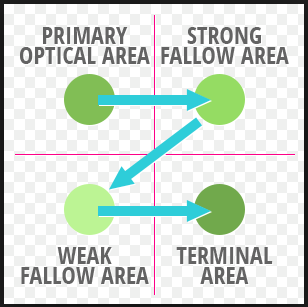
Source: eMaze
By doing thorough research into your new target geography’s culture and cultural preferences, you’ll empower your inbound marketing efforts and avoid basic mistakes like choosing a color scheme that might work against you.
Tip #3: Create Relevant Content Offers
Your international inbound marketing efforts will involve an entire set of dedicated content pieces that may already exist and simply require some tweaking and perhaps some translating. Or, you may need to design completely new content pieces that better suit your new target audience.
Whatever the case, as you begin the work of expanding your business internationally, you’ll need to design B2B content offers that are suitable for this new geography.
A content offer is typically a long-form type of content such as a white paper or ebook with valuable information that your target audience would be willing to exchange contact information for in order to read.
Content offers are an important component of B2B inbound marketing because not only do they contribute to building an email list, content offers also help filter out viewers who are simply browsing your website, and bring to light those who are your most interested leads.
The place to start when creating B2B content offers is with your buyer personas, which will help shape and target your content offers. Buyer personas are fictional representations of the type or types of buyers you’re looking to attract. Having international buyer personas will help you and your team understand exactly the type of people you are targeting your content to abroad.
How do you create buyer personas? You start by asking questions and getting creative about how to get the answers to them. You might start with specifying what your target industry is. And details like job title, frequently asked questions, and pain points are relevant, too.
You can obtain answers to these questions by asking your sales team and by interviewing your existing customers. You can also gain valuable information by conducting surveys with people inside and outside of your contacts database. Gather all the information that you think is relevant to your buyer personas into an organized document that clearly describes your target audience. This document can be broken down by sections like Background, Demographics, Challenges, Goals, Solutions, etc.
Instead of going at it yourself, you can use online tools like HubSpot’s Make My Persona, to create your buyer personas.
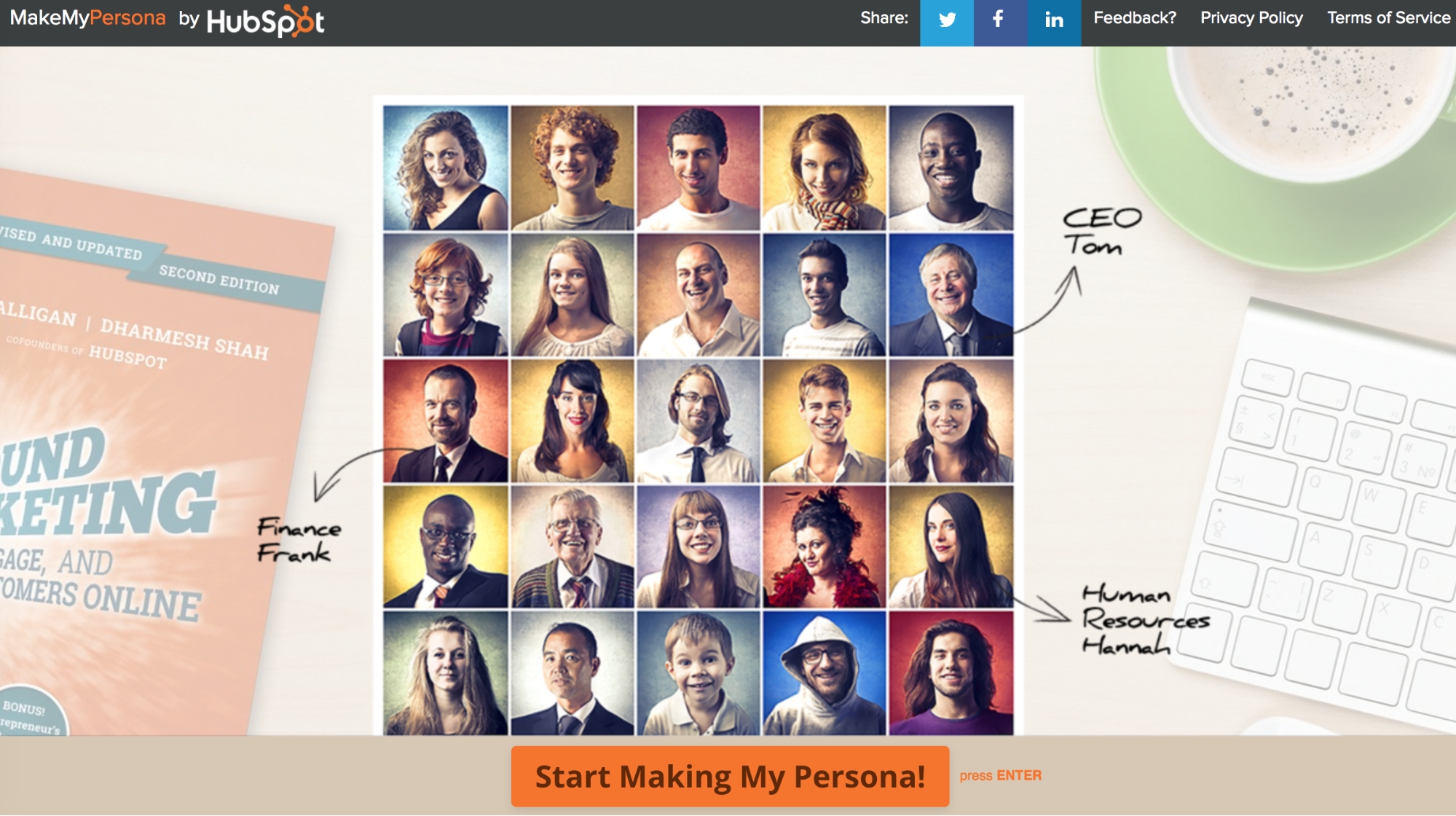
Once you have your buyer persona(s) ready, you’ll be able to design a suitable buyer journey. A buyer journey outlines the different stages a prospect goes through in the journey from being a site visitor to a lead, and hopefully a customer.
The buyer journey consists of three stages: Awareness, Consideration and Decision. For each stage, you should have content that’s tailored for your personas that will guide them along the journey. For example, at the Awareness stage—when a prospect is clear about their need and is now exploring ways to fulfill it—you should provide content such as eBooks, white papers or reports that communicate your leadership in the field and attract the prospect to you. This type of content is called TOFU, “Top of the Funnel” content.
In the Consideration stage, when your prospect is considering different solutions for their need, you might focus on providing MOFU—or “Middle of the Funnel”—content, such as a live demo or a guide.
Finally, when your potential customer reaches the Decision stage of your buyer journey, you might present them with case studies or a product or vendor comparison sheet—typical BOFU or “Bottom of the Funnel” materials that will help guide them toward choosing you.
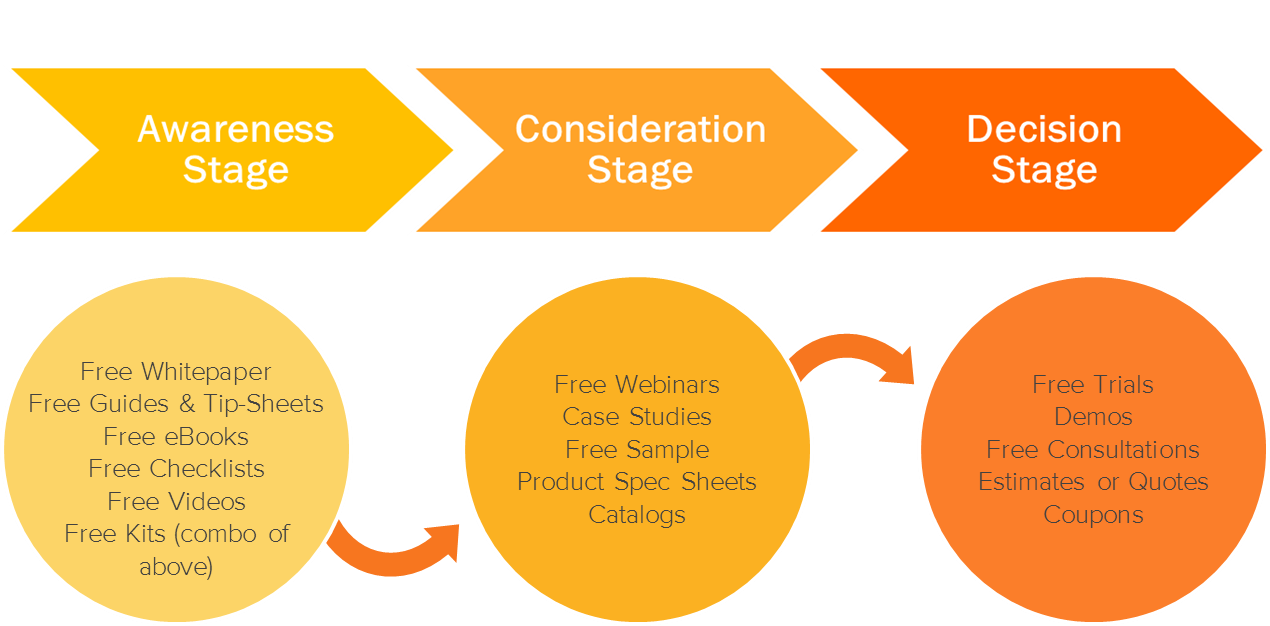
Source: HubSpot
For every piece of content you offer, make sure you create the supporting framework you’ll need to convert your site visitors into leads. This means that every content piece has a dedicated landing page with a clear Call to Action that helps the prospect move further along the buyer journey. Your landing pages should also include an appropriate form for obtaining the information you’d like to get from the prospect, like name, email, company, etc., so you can best understand how to nurture them.
Tip #4: Create Content Campaigns To Attract Your New Target Audience
Content is king in international inbound marketing just as it is in other types of marketing. Here, too, you’ll need to create content campaigns that are unique and relevant to your new target audience. In addition to driving new leads, these campaigns will also help you build brand awareness. Utilizing various inbound marketing tools can significantly enhance the effectiveness of your content campaigns.
Blogging has gained popularity among B2B marketer largely because B2B buyers seek the type of information often offered on blogs as part of their buyer journey. Blogging is also important because it allows you to display your leadership in your subject area.
Use a blog to provide information that the prospects in your new market will find interesting and useful—preferably information that will answer their questions or relate to an issue they’re having. If you need help developing blog topics, check out the Buzzsumo app, a useful tool for getting ideas on topics related to your business. Make sure that each of your content campaigns revolves around one main theme, and that each piece of content guides readers through the buyer journey we discussed previously.

As with every content campaign you run, your blog posts should each have a clear call-to-action. A CTA that leads site visitors to filling out a form will help you get leads that you’ll then be able to nurture through the buyer journey toward converting.
Make your blog posts even more powerful by optimizing each one for international SEO. To do this, use Google keyword planner. This neat tool offers useful statistics and other insights to help you discover and apply the right keywords for your target audience.
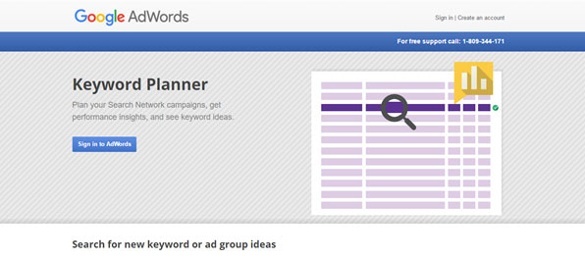
Check out our previous blog post on how to do international SEO.
Tip #5: Develop a Social Media Marketing Strategy
Social media is one of the top three most common marketing activities alongside blogging and performing outreach, so it’s not something you’ll want to skip over in your international inbound marketing.
When you created your buyer personas, your research should have revealed where you target audience hangs out online. Looking more deeply into the online channels that attract your target audience, you’ll also be able to discover what times of day and week they are most likely to engage with your content. You’ll probably find that the type of content they engage with is different across different platforms, too.
As you develop your social media marketing strategy, be sure to tailor the type of content you provide on different networks to whatever it is your target audience expects and wants to find on that specific channel.
In addition, keep in mind that people in different parts of the world use social media for different purposes. To help you navigate the intricacies of the various social media channels and understand how to best use them for connecting with your international target audience, explore the analytics tools provided by each channel. Twitter Analytics, Facebook’s Audience Insights, and LinkedIn Analytics all help you understand your target audience’s activities on those channels, which will help you get active there in ways that will resonate well. Facebook also offers Analytics for Apps, which would be interesting for you if your business has an app.
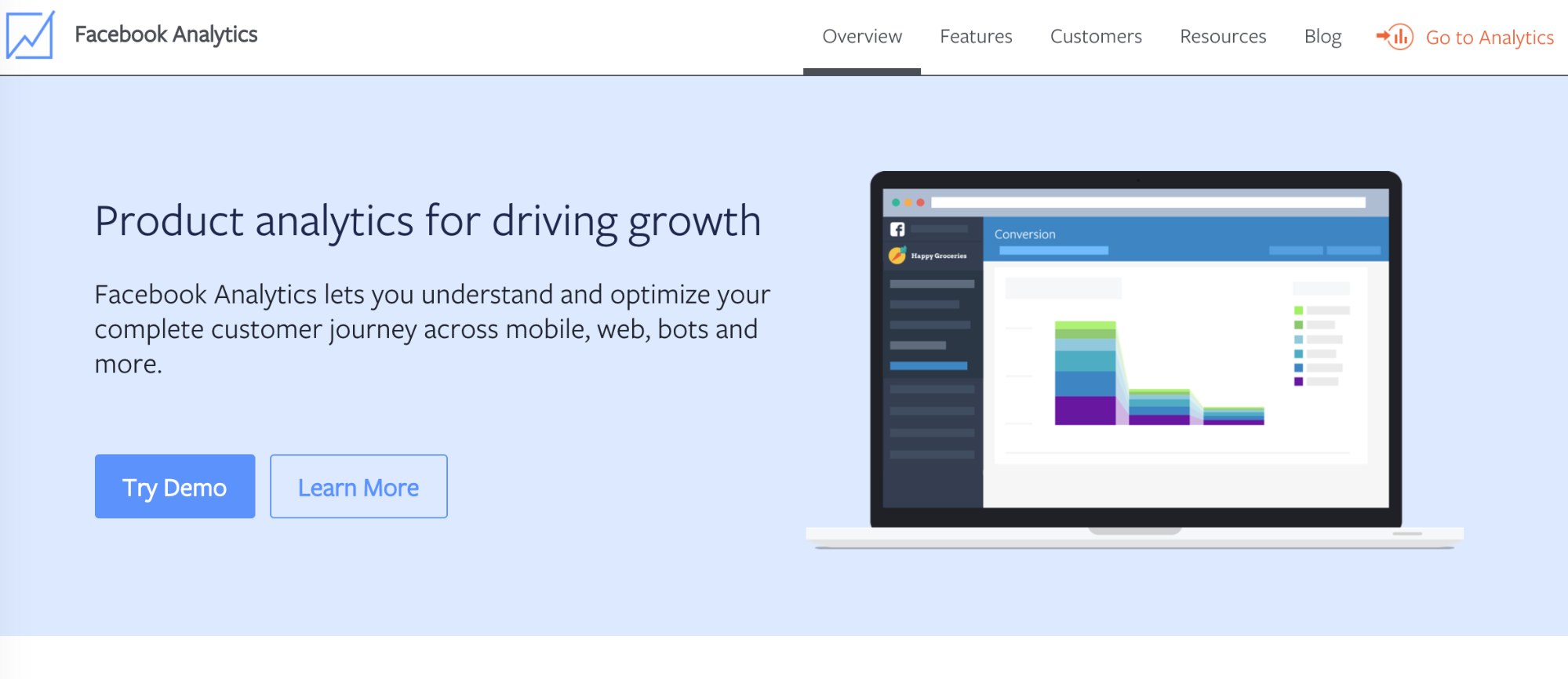
Benefits of Inbound Marketing Strategies
Inbound marketing strategies offer numerous benefits that can significantly impact your business’s growth and success. One of the primary advantages is cost-effectiveness. Compared to traditional outbound marketing methods, inbound marketing often requires a lower investment while delivering higher returns. This is because inbound marketing focuses on attracting customers who are already interested in your products or services, leading to higher conversion rates.
Another key benefit is increased brand awareness. By consistently creating and sharing valuable content, you can establish your business as a thought leader in your industry. This not only helps in attracting potential customers but also builds trust and credibility with your target audience. Additionally, inbound marketing strategies improve customer engagement by fostering meaningful interactions through various channels such as social media, blogs, and email campaigns.
Overall, inbound marketing helps businesses build long-lasting relationships with their customers, driving website traffic, generating leads, and ultimately increasing sales.
Building a Strong Online Presence through Digital Marketing
In today’s digital age, having a strong online presence is crucial for business success. Digital marketing encompasses a wide range of activities that use online technology to promote products and services. This includes creating and distributing content across multiple online channels such as email, websites, blogs, social media, and video streaming platforms.
By leveraging digital marketing, businesses can increase their visibility and reach a wider audience. A strong online presence helps attract potential customers and retain existing ones. It also allows businesses to engage with their audience in real-time, providing valuable insights and building a loyal customer base.
To build a robust online presence, a well-rounded digital marketing strategy that includes SEO, content marketing, social media marketing, and email marketing is essential. Each of these components plays a vital role in driving traffic, generating leads, and boosting sales.
Measuring and Evaluating Success
Measuring and evaluating the success of your inbound marketing efforts is crucial to understanding what works and what doesn’t. By tracking various metrics, you can gain insights into the effectiveness of your strategies and make data-driven decisions to optimize your campaigns.
Key metrics to monitor include website traffic, social media engagement, lead generation, and conversion rates. Tools like Google Analytics, social media analytics, and marketing automation software can help you gather and analyze this data. Regularly reviewing these metrics allows you to identify trends, understand your audience’s behavior, and adjust your strategies accordingly.
By continuously measuring and evaluating your inbound marketing efforts, you can improve your overall performance, enhance customer engagement, and achieve your business goals.
Integrating Paid Marketing and Automation
Integrating paid marketing and automation into your inbound marketing strategy can significantly amplify your reach and efficiency. Paid marketing, such as pay-per-click (PPC) advertising, allows you to target a broader audience and drive more traffic to your website. This can be particularly effective in reaching potential customers who may not have discovered your business through organic search alone.
Automation tools, such as marketing automation software, streamline your marketing processes and enable you to personalize your content. These tools can help you manage email campaigns, segment your audience, and track customer interactions, ensuring that your marketing efforts are both efficient and effective.
By combining paid marketing and automation with your inbound marketing strategy, you can create a comprehensive approach that maximizes your reach, improves customer engagement, and drives better results. This integrated strategy ensures that you are not only attracting potential customers but also nurturing them through the entire customer journey, ultimately leading to higher conversion rates and business growth.
That’s A Wrap!
International inbound marketing requires time, patience, and a lot of planning!
As you look to expand your business globally, you’ll find that international inbound marketing is a great strategy for attracting new leads and growing your brand awareness in a new geography. It revolves around having a quality content marketing strategy and producing content that the people you most want to reach will find value in, and that’s exactly what today’s B2B buyers are looking for.
We hope you’ll use the tips here to help empower your journey into international inbound marketing. Whichever direction you choose—whether it’s north, south, east, or west—the tactics discussed here will surely help in attracting the prospects you’re seeking to reach.
For more in-depth information on tips for entering a new market, download our free ebook, “A 4-Step Growth Strategy for Entering New Markets”.
